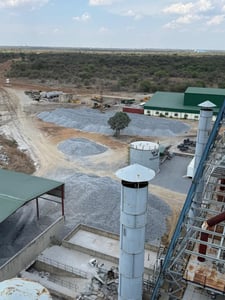Despite its cosmic abundance, helium remains remarkably rare on Earth. Its formation is slow and natural, a byproduct of radioactive decay that seeps through rock over millions of years. Only when this invisible gas becomes trapped in specific geological formations, usually alongside natural gas, does it become extractable. Even then, the concentrations are often too low to be viable, requiring complex cryogenic techniques and economically favourable conditions to make commercial sense.
Historically, helium supply has been closely tied to natural gas production, particularly in the United States. For decades, the Federal Helium Reserve provided a critical buffer for industrial users, but that stockpile is now effectively exhausted. With the US stepping back, the global balance has shifted towards a narrower band of suppliers in regions prone to political and logistical instability. This concentration is leaving the helium market exposed, as any disruption in a key facility or export route reverberates globally.
What’s more, demand for helium is not easing. It remains indispensable in MRI machines, fibre optic cable production, semiconductor fabrication, aerospace engineering and scientific research. None of these uses are optional, and few can easily transition to substitutes. Helium’s chemical properties, non-reactive, non-flammable, and capable of reaching cryogenic temperatures, make it uniquely valuable. The challenge is not just about scale; it’s about precision and reliability.
In response, attention is now turning to primary helium exploration, ventures that pursue helium directly rather than as a by-product of hydrocarbon extraction. These operations are targeting geological settings where helium has accumulated independently, often released from ancient basement rocks through volcanic activity. Some of these fields have returned promising concentrations, with nitrogen as a carrier gas instead of methane, signalling a lower-carbon and potentially more sustainable supply route.
For investors, this represents an intriguing shift. Primary helium ventures are still early-stage, but their focus on exploration rather than piggybacking on fossil fuel production allows them to position as clean, strategic plays. If successful, they could provide long-term supply security for sectors that are unlikely to see demand erosion any time soon.
Alongside this, technology providers are adapting to the changing availability. In laboratory settings, companies are offering advanced gas generators that enable users to move away from bottled helium, opting instead for in-house hydrogen or nitrogen solutions where appropriate. This not only addresses cost volatility but also supports operational continuity amid unpredictable supply cycles.
The interplay between resource exploration and technological innovation is creating new lanes for capital. Investors attuned to the signals are finding opportunity not only in the ground, but in the infrastructure that surrounds it. As helium tightens, every cubic foot becomes more valuable, whether mined, conserved or replaced.
General Helium Inc is an emerging helium production company led by experienced oil and gas industry veterans. Focused on developing existing resources rather than exploration, GH prioritizes generating free cash flow.










































